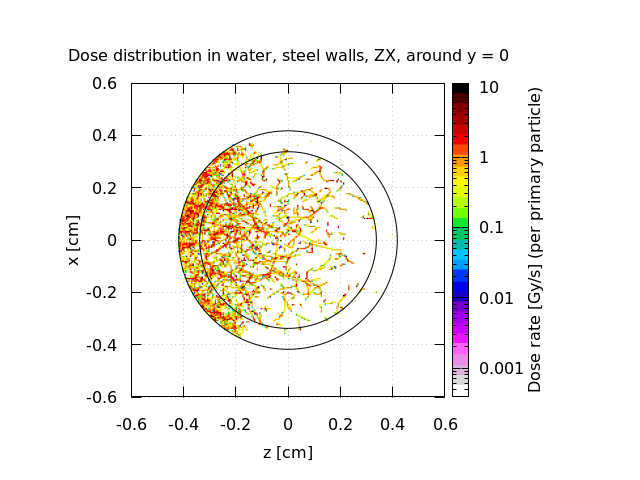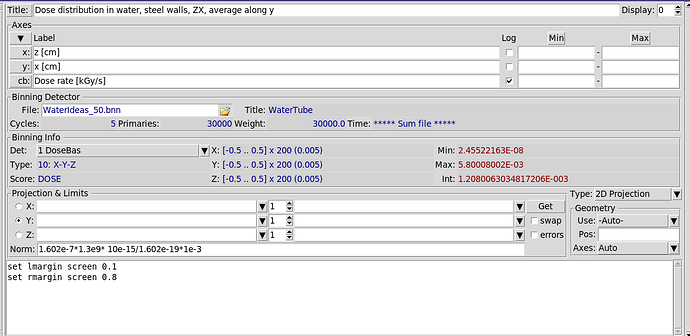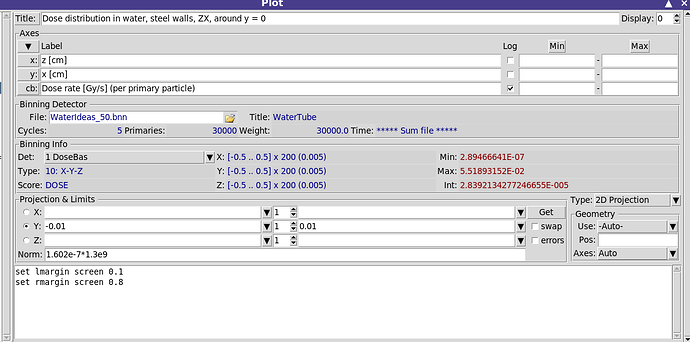Dear FLUKA people,
I have a question regarding the normalisation of the dose if the considered volume is smaller than the beam.
As I understand it, the dose (from USRBIN) is given in GeV/g per primary particle. For normalisation in a plot I must multiply by 1.602e-7 to have it in Gy.
Then, with my electron beam with a repetion rate of 1.3GHz, 10fC for example, I would also multiply by 1.3e9 * 10e-15/1.602e-19 to get Gy/s for all electrons.
I am pretty confindent that I understood that correctly. However, this normalisation only makes sense when I plot the entire volume, right?
For example: I have a test experiment here with a steel tube and water inside. The electron beam irradiates it and I want to know the dose rate at every point. But I only know how to normalize, if I average over all y (when plotted in XZ plane, like in the attached figure).

If I only want to look at the dose rate around y = 0, there would be much less electrons in that area. So I wouldn’t have 10fC there, but just a certain fraction. How do I account for that? I dont want to have to normalize per primary particle.

Do I need to get the amount of electrons in that area using some sort of tracking and then use that fraction to get the “real charge” in that area? Or is there a much simpler way?
I would appreciate some help!
Thank you and best regards,
Tasha

